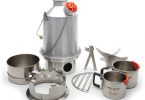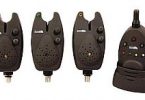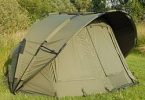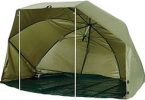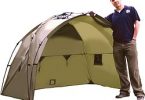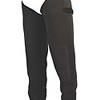With all the hype surrounding carp baits and tackle, it’s sometimes easy to overlook the simple things – like leads! The irony is that choosing the wrong type of lead could see your bait sitting under a mound of silt, not hooking the carp effectively when it takes your bait, or in terms of casting, could mean the difference between hitting the mark or falling thirty yards short.
Matching the right lead to your intended approach is critical, yet so often on the bank I see rigs built to do one thing being used with leads designed to do something completely different. So how do you make sense of it all?

First we need to distinguish between the two main types; swivel leads and inline leads. Swivel leads, as the name suggests, are those which have a small metal loop embedded in one end which can be attached to a snap swivel (most come with a swivel already attached). Inline leads are those which have a hole through the core of the lead for the line to feed through. Both types have an intended purpose;
Inline Leads
Inline leads are suited to hard bottomed waters where the lake bed is made up of gravel, clay or compact sand. On the cast the lead will hit the water nose first but because the bottom is hard, they won’t penetrate the lake bed. The advantage of an inline lead is that it acts extremely well in terms of bolt effect. Most inline leads have the bulk of the weight situated at the hooklink end of the weight, and because it’s semi-fixed, as soon as the fish extends the hook link, it will meet with the majority of weight in the lead, thus increasing the chances of a good hook hold.

Swivel Leads
Swivel leads are ideal on waters with a soft or silty bottom. An inline lead is prone to diving into the silt and burying the hooklink on the cast, so many anglers fishing silty waters favour a swivel lead system, which, with practice can be feathered down to the bottom. The type of set up you are intending to use will also have a bearing on whether you use a swivel or inline lead, for example, a swivel lead would be required to fish a helicopter or free running rig.

Shape Selection
There are various body shapes to suit different purposes, most of which are available in either swivel or inline form;
Distance Leads
Designed for attaining maximum distance on the cast. Concentric in design they have no flat sides so are extremely stable in flight and usually have more weight located towards the bottom half of the lead. Ideally suited to firm bottoms.

Zip Leads
Zip leads stemmed from tournament casting and for a long while were classed as the ultimate long-cast lead. More recently distance leads have come to the fore with many preferring them to the old style zip lead, however, it is still a firm favourite throughout the north west, an area famed for its silty meres, where many anglers find it perfect for attaining distance, but also having the ability to be pulled back out of heavy silt at distance due to its slender body shape. I fish many such waters in the north west and must confess I have a soft spot for the zip lead, or the similar Trilobe lead (below) which performs the same function.

Trilobe Lead
The Trilobe lead is designed for distance fishing over soft bottoms. The lead is usually flat on the underside, with two bulbous long edges and one peaked edge down the middle, in effect giving three edges. The idea is that on contact with water the lead feathers down slower than a concentric lead (e.g. zip lead) and will not go into the silt as much. Not capable of attaining the distance of a zip or distance lead but excellent on waters where silt is a major problem.

Pear or Dumpy Lead
Whilst not able to travel the distance of a zip or distance lead, the dumpy pear is still capable of a good chuck. When I think of pear leads I think of accuracy. Other than a ball lead it’s probably the most effective condensed lead there is, and I find it perfect when accuracy on the cast is essential, particularly if I’m fishing in strong winds. I also use dumpy pears to good effect when fishing close in on the Top Pool. There is a lead limit of 1½ oz, and in addition there is deep silt in most places, so I find a light pear of between half ounce and one ounce nestles into the top layers of silt perfectly and allows the silt to mould around the lead, so that on hooking the encased lead has a better bolt-effect thanks to the moulded silt holding it firm.

A Nash Pear Lead (Swivel) – One of my firm favourites!
Ball Lead
Without a doubt this is the most condensed lead design available, and if you are looking to incorporate a bolt-effect into your rig, or you need the fish to feel as much weight as possible immediately on picking up the bait, then you won’t find much better. They can be a little cumbersome and they’re not everyone’s cup of tea – you certainly don’t see them on the bank as much as you used to – but they are extremely effective and have worked well for me on a number of occasions.
A friend recently showed me a variation on the theme which was effectively a square lead with the corners cut off and a taper on the swivel end. It was similar to a ball lead in that it was more condensed than a pear or square pear, but designed for use on slopes where a ball lead would struggle to hold firm.

Grip leads
Grip leads, as the name suggests, are designed to hold steady in tough conditions. Primarily they are suited to river fishing where the flat nobbled shape allows them to grip to the bottom more effectively than a conventional smooth sided lead, but many anglers also find them effective when fishing steep shelves, bars, or marginal drop-offs.

Variations
There are many variations to the above, but in essence, all will conform to the same basic body shapes. The most common variation is the flat sided lead, which is designed to hold bottom on shelves and bars, so that that the rig will not roll down the slope as it would if you used a ball or distance lead on a sloping margin, for example. Flat Pears are probably the most commonly used flat sided lead, especially in inline guise, though you can get flat versions of almost any lead. Whilst flat sides do help with stability, they are not as streamlined as the traditional shapes, so won’t cast as far, but for medium range work they can prove extremely effective.

Coatings
Coatings have evolved a great deal in recent years. At one time most leads were bare metal, and some still are, but the majority now have a coating. A coating serves two purposes; firstly it gives the lead a protective shielding. A bare lead that snags against a hard object can be left with a sharp-edged gouge capable of cutting the strongest of hooklinks, whereas a coated lead tends only to dent, which obviously reduces the risk of cut-offs. Secondly they can offer a degree of camouflage, and you can find a whole range of colours and finishes to suit almost any lake bed. When it comes down to coatings it’s a personal choice. In most cases I opt for a mat finish, as I’ve found those with shiny surfaces often reflect light off the bottom in clear water. If I want my lead to blend in with its surroundings, I’ve found the powdered finish leads to be particularly effective, especially when fishing in silt.

Imitation Leads
Taking it one step further are imitation leads. The Stonze weights spring immediately to mind; a pebble shaped weight designed to go unnoticed by the fish. They are available in a whole range of shapes and sizes but are quite light for their size compared to lead, so may not offer the same hooking/bolt properties of a traditional lead, and obviously their irregular shape makes them ill-suited to long distance casting, but for close to medium work they do have their advantages. I’ve used them a number of times when fishing at close quarters and think they are well worthy of consideration when targeting rig-shy fish.

Overview
As for what’s in my box, well I carry a small selection of various leads, but as most of my fishing is done on extremely silty waters, I rarely fish anything other than swivel leads. I have used inline leads on many occasions, but I’d be lying if I said I got on with them overly well. Personally, I find inline systems to be too restrictive when I need to make instant changes, whereas a swivel set-up gives me much better flexibility both in terms of the actual rig I’m looking to present, and the size and type of lead required to do the specific job in hand.
All the leads detailed above can be purchased in swivel or inline design to suit your preferred set-up, though it’s important to remember that all the different body shapes have a specific purpose, and by matching the correct lead to your intended approach you stand a much better chance of success both in terms of presentation and results.
Julian Grattidge
October 2006
Carp Fishing Leads For Sale

